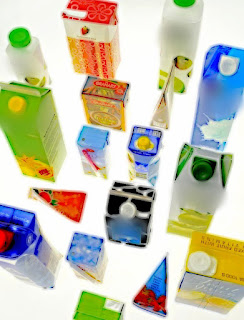The Baby
Food
Packaging
Market
has trends evolving from the use of plastics for making baby food
containers, boxes, and pouches. It has new features like packaging
rice puffs, crackers and cereals in boxes of various types such as
card sleeve and jumbo packs. Foods like oatmeal infant cereals and
dry rice in small quantities are packed in pouches.
Baby food
traditionally came in glass jars but now packaging has shifted to
plastics and other materials for their easy storage and lower cost.
Packaging of baby food depends on the type of baby food like dried,
prepared, milk formula, and other baby food. Baby food comes in
packages such as shaped, semi-liquid, liquid, folding cartons, thin
wall containers, metal cans and stand-up pouches. Stand-up pouches
have an increasing demand because of their long shelf life.
Geographically, the
baby food market is segmented into North America, Europe, Asia
Pacific, and the rest of world. Asia Pacific has the highest demand
because of growing population of infants in countries like India and
other developing countries.
Get Free Sample
Report :
Some of the major
drivers for this market are rising demand of stand up pouches, thin
wall containers because of their hygienic, safety, light weight, easy
to carry and reusable nature. The preservation and long shelf life of
these packets is an added advantage. While packaging these products,
the plastic has BPA (Bisphenol A) which is harmful for infants and
toddlers and so has been banned by the governments of the U.S.,
Canada, and Europe and this is one of the inhibitors for the growth
of this market. Increase in preference for foods packed in
microwaveable plastic tubs and pouches by teenagers has increased
their demand. Innovations for reducing cost and packaging in
biodegradable materials like paper and increased demand from rural
areas for baby foods are opportunities for this market.
Some of the Major
Companies in this market are
Bericap India Pvt. Ltd., Essel Propack Limited, Hindustan National
Glass & Industries Ltd, ITC Ltd Paperboards and Specialty Papers
Division (PSPD), Tata Tinplate Company of India (TCIL),Tetra Pak
India Pvt Ltd, Cascades Inc, FPC Flexible Packaging Corp, Celplast
Ltd, Hood Packaging Corp, Pretium Packaging LLC, Winpak Ltd,
AptarGroup, Inc,Ball Corporation ,Bemis Company, Inc., Rexam Inc, and
MeadWestvaco Corporation.
About Us :
Transparency Market
Research is a global market intelligence company, providing global
business information reports and services. Our exclusive blend of
quantitative forecasting and trends analysis provides forward-looking
insight for thousands of decision makers. Our experienced team of
Analysts, Researchers, and Consultants, use proprietary data sources
and various tools and techniques to gather, and analyze information.
Our data repository
is continuously updated and revised by a team of research experts, so
that it always reflects the latest trends and information. With a
broad research and analysis capability, Transparency Market Research
employs rigorous primary and secondary research techniques in
developing distinctive data sets and research material for business
reports.




